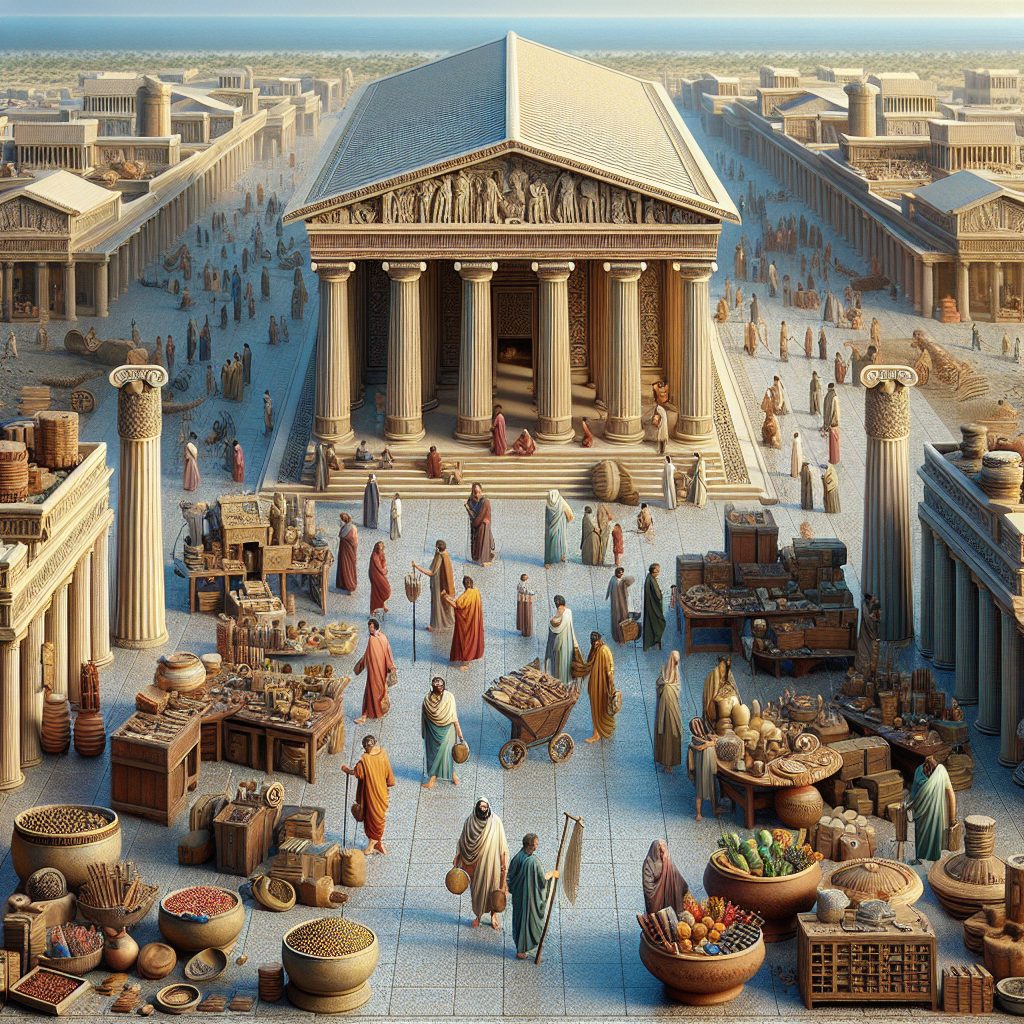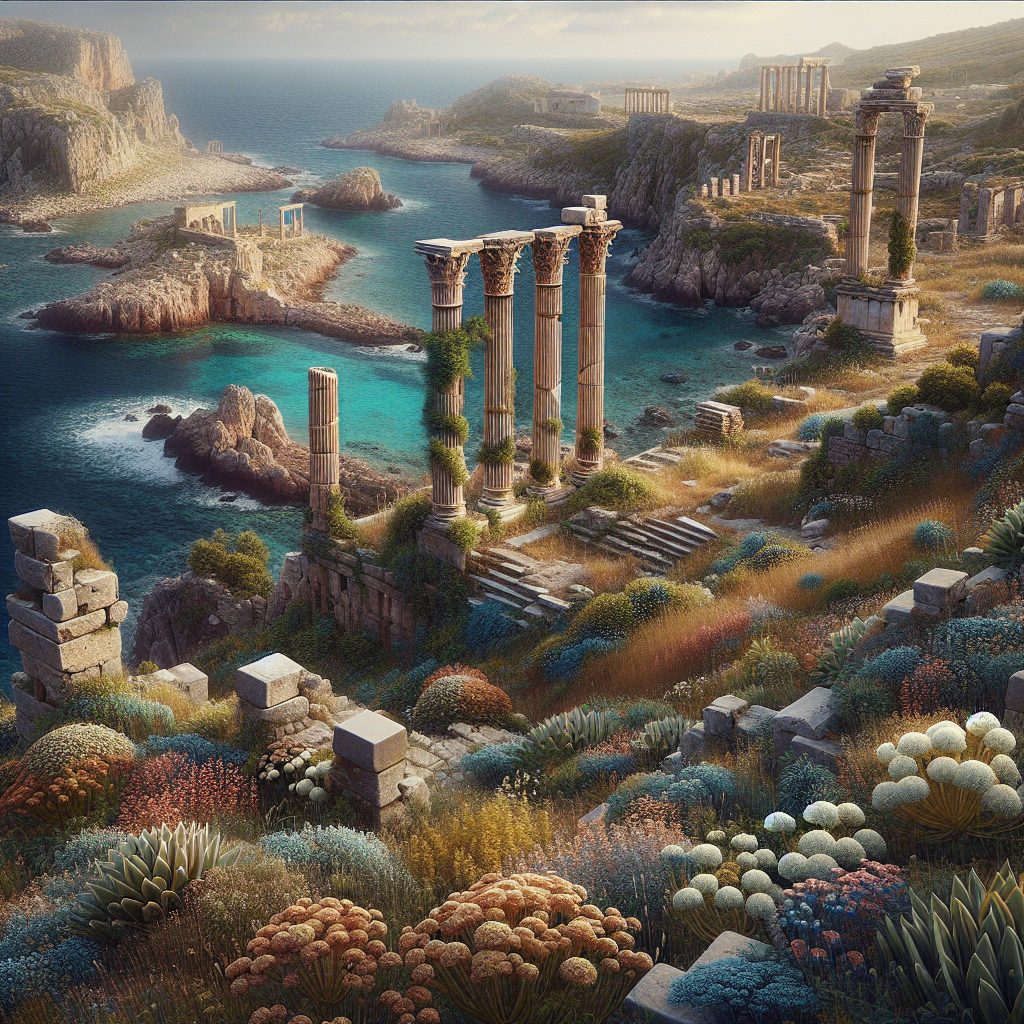Tharros, the ancient trade hub situated on the island of Sardinia, holds a wealth of fascinating historical significance. With its origins dating back to the 8th century BC, Tharros boasts a rich heritage as a flourishing center of commerce and exchange. This ancient port played a vital role in connecting various Mediterranean civilizations, becoming a melting pot of cultural exchange and economic prosperity.
One unique aspect of Tharros is its strategic location, situated on the western coast of Sardinia. This position allowed the city to serve as a key maritime gateway, facilitating trade routes and interactions between the Phoenicians, Carthaginians, and other Mediterranean powers. The city’s vibrant commercial activities not only brought prosperity to Tharros but also fostered a diverse and cosmopolitan atmosphere.
Moving forward, this article will delve into the key takeaways from Tharros’ ancient trade legacy. We will explore the economic impact of this bustling port, the cultural exchanges that took place, and the archaeological significance that continues to captivate historians and archaeologists today. By examining these pivotal aspects, we can gain a deeper understanding of the importance of Tharros and its role in shaping ancient Mediterranean trade networks. Stay tuned to uncover the fascinating story of Tharros and its enduring legacy in the annals of history.
Key Takeaways
1. Tharros, an ancient city in Sardinia, played a significant role in Mediterranean trade during the Phoenician and Roman periods.
2. Excavations at Tharros have uncovered evidence of trade networks involving the Phoenicians, Greeks, Romans, and local Nuragic people, revealing the city’s cosmopolitan nature.
3. Various commodities were traded at Tharros, including metals, pottery, agricultural products, and luxury goods such as ceramics, glassware, and jewelry, highlighting the economic importance of the city.
4. Tharros served as a strategic port, allowing for maritime trade routes that connected the eastern and western Mediterranean regions, influencing cultural and commercial exchanges.
5. The decline of Tharros can be attributed to several factors, including the fall of the Roman Empire, changes in trade routes, natural disasters, and the rise of new urban centers, ultimately leading to the abandonment of the city.
What was the significance of Tharros ancient trade?
The Location of Tharros
Tharros was an ancient Phoenician city located on the western coast of Sardinia, Italy. Situated near the Gulf of Oristano, Tharros had a strategic position for maritime trade routes in the Mediterranean.
Historical Background
Tharros thrived during the Phoenician and later Carthaginian period, from the 8th century BC until its decline in the 2nd century AD. Traces of various civilizations including the Phoenicians, Carthaginians, Romans, and Byzantines can be found in the archaeological remains of Tharros.
Trade Routes and Commodities
Tharros played a crucial role in maritime trade, connecting the eastern Mediterranean to the western regions. The city was renowned for its production and export of goods such as textiles, pottery, metals, and agricultural products.
Maritime Trade Networks
Tharros was part of extensive maritime trade networks that included other Phoenician and Carthaginian settlements, as well as distant trading partners. These networks facilitated the exchange of goods, ideas, and cultural influences across the Mediterranean.
Trade Routes and Shipwrecks
The coastal waters near Tharros are notorious for numerous shipwrecks, some of which have preserved valuable insights into ancient trade routes. The wrecks found in this area provide archaeologists with evidence of the trade networks and the cargo carried by ancient ships.
Influences on Local Economy
The prosperity brought by ancient trade greatly influenced the local economy of Tharros. The influx of wealth allowed the city to develop infrastructure, public buildings, and defensive walls. Trade also contributed to social development and cultural exchanges.
The End of Tharros
In the 2nd century AD, Tharros faced various challenges like raids and invasions by barbarian tribes. The declining Roman Empire also impacted the city’s economic and political stability. Eventually, Tharros was abandoned, and its inhabitants relocated to other nearby settlements.
The Legacy of Tharros
Despite its eventual demise, Tharros left a lasting legacy. Today, the archaeological site of Tharros serves as a significant reminder of the past, offering insights into ancient trade, culture, and the lives of the people who once lived there.
7 Essential Tips for Understanding Tharros Ancient Trade
- Explore the archaeological remains of Tharros to gain a deeper understanding of its ancient trade networks.
- Learn about the commodities that Tharros traded, including textiles, pottery, metals, and agricultural products.
- Study the maritime trade routes connected to Tharros and how it influenced trade in the Mediterranean.
- Discover the significance of shipwrecks near Tharros in uncovering details about ancient trade routes.
- Examine the impact of trade on Tharros’ local economy, infrastructure, and cultural development.
- Investigate the factors that led to the decline and abandonment of Tharros in the 2nd century AD.
- Visit the archaeological site of Tharros to witness its legacy and gain a firsthand experience of its ancient trade history.
Frequently Asked Questions
1. What is Tharros ancient trade?
Tharros ancient trade refers to the trading activities that took place in the ancient Phoenician and Roman city of Tharros, located in Sardinia. It was an important hub for trade in the Western Mediterranean during ancient times.
2. What goods were traded in Tharros?
In Tharros, various goods were traded including pottery, agricultural products, metals, textiles, and exotic goods like spices, dyes, and precious stones. The city’s strategic location allowed it to trade with different civilizations, enriching its cultural and economic aspects.
3. Who were the main traders in Tharros?
The ancient city of Tharros was primarily associated with Phoenician traders who established a strong presence in the region. They possessed excellent maritime skills and navigational knowledge, which helped them dominate the trading routes in the Mediterranean. However, after the Romans conquered the area, they also became significant traders in Tharros.
4. How did Tharros contribute to trade in ancient times?
Tharros played a vital role in trade during ancient times due to its strategic coastal location, which allowed easy access to maritime routes. The city served as a trade hub connecting various civilizations, facilitating the exchange of goods, ideas, and cultures, ultimately contributing to economic growth and cultural influences.
5. Were there any trading regulations or systems in Tharros?
In Tharros, trading activities were regulated by a commercial network that involved merchants, traders, and local authorities. Various trade agreements and contracts were promulgated to ensure fair trade practices and settle disputes among traders. Additionally, Tharros had its own currency to facilitate transactions.
6. What were some challenges faced by traders in Tharros?
Traders in Tharros had to overcome challenges such as piracy, unpredictable weather patterns, and political instability. These factors posed risks to the safety of trade routes and affected the profitability of trade ventures. However, skilled sailors and experienced traders managed to navigate through these challenges to maintain a thriving trade network.
7. Did Tharros have any specific trading partners?
Tharros engaged in trade with various civilizations across the Mediterranean. Some of its notable trading partners included Carthage, Egypt, Greece, the Roman Empire, and other Phoenician colonies. These connections allowed Tharros to access a wide range of goods and establish economic ties with different regions.
8. How did Tharros decline as a trading center?
Tharros experienced a decline as a trading center due to factors such as political instability, changes in trade routes, and the rise of other competing cities. The decline in maritime trade led to a gradual abandonment of Tharros as a significant trading port, eventually leading to its decline and abandonment as a city.
9. Can the remains of Tharros provide insights into ancient trade?
Yes, the archaeological remains of Tharros offer valuable insights into ancient trade practices. Excavations have revealed artifacts, buildings, and infrastructures related to trade, providing evidence of the trading activities that took place in the city. These discoveries contribute to our understanding of ancient trade networks and cultural interactions.
10. Is Tharros a popular tourist destination today?
Yes, Tharros is a popular tourist destination today due to its historical significance and archaeological sites. Visitors can explore the ruins, walk along the ancient streets, and admire the remnants of ancient temples, houses, and other structures. The site offers a unique opportunity to delve into the rich history of Tharros and the ancient trade it once thrived upon.
Final Thoughts
Tharros ancient trade showcases the importance of trade in shaping the destiny of civilizations. It serves as a testament to the human desire for exploration, exchange, and economic progress. The archaeological remnants remind us of the intricate web of connections forged through trade, which not only brought material wealth but also fostered cultural exchanges, innovations, and the spread of ideas.
Visiting Tharros allows us to walk in the footsteps of ancient traders and marvel at the ingenuity and bravery required to navigate the seas and establish trade networks. It serves as a reminder that trade, regardless of the era, remains a fundamental aspect of human society. The legacy of Tharros ancient trade continues to fascinate and enlighten, fueling our curiosity to explore the vast history of trade and its enduring impact on our world.






